Timeline
1880
Development
begins.
Southend's
development
started
apace
in
1880,
particularly
the
Milton
area
north
of
the
railway,
the
next
30
years would see the area build up its residential housing stock and this area in particular is now a key conservation area in the town.
The
Plough.
The
junction
of
London
Road
and
West
Road
features
on
many
a
historic
map,
and
one
of
the
original
through-ways
of
the
area.
It
would
be
a
natural
location
therefore
to
place
a
hostelry.
In
1880
building
plans
were
submitted
for
then
The
Plough
Hotel,
naturally
the
farm
filled
views
at
this
time
is
very
different
to
the
one
that
can
be
seen
today,
a
urban
Westcliff
hub
of
traffic
and
activity.
The
Hotel
was
built
almost
alone
with
maybe
an
odd
cottage
here
and
there,
and
due
to
its
then
remoteness
it
was
very
much
a
key
staging
point
for
the
horse
traffic
of
the
day.
Take
a
walk
round
the
back
of
the
Plough
today
and
you
will
still
see
the
iron
rings
in
the
wall that horses were tied to as well as an original coaching building.
Mr.
W.
Jefferies,
an
auctioneer,
advertised
“A
capital
Post
Windmill,
driving
two
pairs
of
stones;
in
good
repair.
Good
residence
with
oven
and
bakehouse
attached,
stables,
coach
house,
piggeries
and
ten
acres
of
arable
and
meadow
land.”
This
was
the
windmill
which stood at the end of the lane which is now Milton Road.
Mr
C.
W.
Jarvis
provided
the
first
concerts
in
the
pavilion
of
the
new
iron
pier,
but
in
1880
when
his
tender
for
further
concerts
was
not accepted by the Board, they gave him permission to erect a concert tent on top of the cliffs.
August.
A
camera
obscura
(A
camera
obscura
is
a
darkened
room
or
box
or
tent
with
a
small
hole
or
lens
at
one
side
through
which
an image is projected onto the wall opposite the hole.) opened on Pier Hill, and became a popular attraction for a great many years.
September.
A
few
members
of
the
Community
of
Sisters
of
Nazareth
whose
mother
house
was
at
Hammersmith
opened
the
former
Milton Hall as Nazareth House. The sisters had no funds and depended entirely upon voluntary subscriptions.
October. Southend Liberal Association was formed with Mr. J. Farley Leith, Q. C., of Prittlewell Priory, as first president.
Board Schools, London Road, were erected.
1881
The Cemetery, in North Road, four acres in extent, opens under the control of the Corporation.
Steps
were
taken
for
the
formation
of
a
cottage
hospital.
Rev.
F.
Thackeray
presided
at
a
meeting
at
the
Royal
Hotel
when
Dr.
Deeping
said
if
a
hospital
was
started,
the
medical
men
would
give
there
services
gratuitously.
It
was
decided
to
start
a
hospital,
but
the foundation stone of Victoria Hospital was not laid until 1887 - the scheme promoted six years previously was not well supported.
Southend
gets
larger.
The
1881
census
shows
the
population
of
Southend
as
7,979,
although
improvements
to
the
rail
system
would
certainly accelerate the rate of increase. In 1892 the population went over 12,000.
Warrior
Square
develops.
At
the
corner
of
the
High
Street
and
Southchurch
Road
a
13
acre
field
was
divided
into
lots
and
auctioned
off
for
the
speculative
development
of
shops
and
houses.
A
central
park
had
already
been
laid
out
and
would
remain
in
place
for
the
benefit of the residents, on payment of an annual fee of 1 guinea.
Southend
Park
sold.
Mr
Steward
who
owned
Southend
Park
decided
to
sell
up
this
year,
it
sold
privately
for
£2,800.
The
land
continued
as
a
park
for
a
short
while,
however,
the
longer
term
intention
of
purchase
started
to
take
form
with
houses
springing
up,
as
to
where
it
was
find
the
Park
Tavern
on
London
Road
and
consider
the
land
behind
it
and
the
roads
that
form
a
natural
perimeter.
The
park
situated
south
of
London
Road
gained
an
added
bonus
during
the
winter
of
1881
as
the
lake
in
the
park
froze
over
adequately
enough
ice
skating
was
permitted.
This
activity
captured
the
imagination
that
by
mid
January
lights
had
sprung
up
around the lake to allow evening skating, and small fires were lit around to keep those watching warm.
Pier
Train
closes.
Southend
Pier
was
served
well
up
until
1881
with
the
horse
drawn
railway
which
provided
passengers
and
easier
way
of
connecting
with
the
steamers
waiting
for
them
over
a
mile
away.
The
railway
in
an
electric
format
would
not
open
again
until
1890.
1882
A
Year
of
planning.
1882
was
a
year
of
discussion
and
dialogue
through
the
Local
Board.
The
original
pier
was
becoming
a
hazard,
and
inspections
were
taking
place
revealing
that
the
structure
was
becoming
increasingly
dangerous.
Talks
were
happening
to
have
a
new iron built pier put in its place, and finding the right contractor and financier to make this happen was an ongoing process.
A new rail line to link Southend with the rest Essex was under discussion and getting closer to reality.
Electrification
of
the
street
lighting
across
the
town
was
being
posted
as
happening
at
the
end
of
the
year.
Indeed
at
the
Leigh
Industrial
Exhibition
one
of
the
most
popular
stands
was
one
exhibiting
the
amazing
electric
light.
The
route
between
the
Cricketers
and Prittlewell was especially picked out as needing urgent lighting to prevent people falling into ditches.
Southend
Regatta
took
place
bringing
throngs
of
visitors
into
the
town.
A
whole
host
of
yachting
and
boating
races
took
place,
as
well
as
land
based
activities.
The
Southend
Regatta
this
year
was
considered
to
be
a
tremendous
success
by
the
organisers
and
a
celebratory lunch took place in the autumn.
Garon
a
famous
name
with
catering
and
retail
businesses
much
later
in
Southend's
future,
was
becoming
known
around
the
town
but in this year mainly as an Estate Agent.
The
Police
force
in
the
town
amounted
to
four
constables,
and
there
was
growing
concern
over
the
rough
nature
of
Southchurch
and
how
dangerous
it
was
for
females
walking
through
the
area.
The
one
and
only
mode
of
transport
was
a
bicycle
owned
personally
by
one
of
the
constables.
The
force
was
trying
hard
to
push
through
recommendations
that
Essex
Police
invest
in
more
bicycles
(that
would
of
course
only
be
used
only
for
official
business),
but
the
public
were
concerned,
as
they
knew
on
regular
occasions
dispatches
needed
to
be
taken
to
Chelmsford
and
the
only
way
of
doing
this
was
through
a
two
hour
bike
ride.
Could
the
town
cope
while
this
peeler was making his way through the wilds of Essex, particularly the females of Southchurch.
The
Local
Board
came
under
a
lot
of
criticism
during
the
year
over
the
building
of
Queen's
Road.
The
general
members
of
the
board
were
very
upset
that
they
were
being
presented
with
a
done
deal
before
they
had
the
chance
to
discuss
it.
Heated
discussions
occurred which at one meeting led to it being stopped halfway through.
There
was
lots
of
talk
about
the
provision
of
water
to
Prittlewell
and
the
objection
of
the
Prittlelite
residents
there
fearing
there
properties
would
then
have
a
higher
value,
and
attract
more
taxes.
It
was
agreed
to
provide
this
modern
utility
to
only
those
that
wanted it.
Water
was
a
key
conversation
in
1882,
including
the
installation
of
a
drinking
fountain
outside
Trinity
Church,
although
this
facility
was
really
wanted
by
visitors
and
locals
alike,
a
home-owner
objected
to
its
placement
more
or
less
outside
his
house,
but
this
was
finally approved, much to the relief of the thirsty hoards.
Clarence
Road
Baptist
Church
formed
in
May
1882
by
Rev.
J.
G.
Wilson
and
45
members,
all
of
whom
had
split
from
Southend
Baptist
Tabernacle.
Services
were
held
in
the
Public
Hall
in
Alexandra
Street
until
1883
when
an
iron
building
was
erected
in
Clarence
Street.
A
permanent
building
opened
on
17
May
1889
adjoining
the
iron
building
which
was
thereafter
used
as
a
lecture
hall. The church was demolished in 1981 and new premises were erected c1982.
1883
The Local Board acquired Western Esplanade.
A railway bridge was constructed across the High Street, for the extension of the London to Southend railway line to Shoebury.
New
Court
House
built.
With
Southend
building
as
a
fashionable
place
to
visit,
so
with
it
came
crime.
To
cope
with
these
issues
and
to
maintain
order
in
this
respectable
town,
a
courthouse
was
built
to
the
rear
of
the
new
Police
Station
in
Alexandra
Street.
Unfortunately the facility was so well used it needed renewing in 1892.
Banking
in
Southend.
Financial
institutions
in
the
town
were
few
and
far
between,
in
1883
the
first
formalised
bank
was
established
in
the
town,
the
Essex
Bank.
The
town
has
seen
many
banks
come
and
go
and
the
main
shopping
streets
now
have
empty
but
typically designed such buildings dotted around.
1884
January. The first petty sessions are held in Southend.
22nd
April,
Earthquake.
The
earth
shook
all
the
way
down
the
eastern
counties
to
Southend
at
9.20
am
on
22nd
April
1884.
Across
the
town
as
people
stood
shocked
at
this
totally
new
experience,
the
bells
in
the
church
towers
rang,
buildings
shook
and
a
little
damage was incurred across the town.
All
aboard.
The
train
expansion
just
continued
on
and
on
with
Shoeburyness
finally
achieving
the
accolade
of
'end
of
the
line'.
With
a
direct
line
between
Barking
and
Pitsea
installed
later
on
the
journey
from
London
to
Southend
was
increasingly
shortened
in
length
and time, the main centre of disturbance was in Colchester.
Westward
Ho!
Charles
Tilleard
Natusch
a
renowned
architect
put
his
mark
on
Southend
seafront
with
the
building
of
the
Westward
Ho! Hotel a tall dominant building on Western Esplanade.
1885
The Cliffs in front of the Cliff Town Estate is purchased from Mr. Brassey by the Local Board.
Southend's
First
Parliamentary
Election.
A
keenly
contested
battle
ensued
at
the
ballot
box
as
well
as
on
the
streets
of
Southend.
The
country returned a Liberal but Southend, new to this electoral system, set its future course with a Conservative.
Pier
Toll
House.
With
the
pier
in
place
and
becoming
an
attraction
in
it's
own
right
it
seemed
fitting
for
it
to
have
a
grand
entrance,
in
1885
a
magnificent
toll
house
was
opened,
and
proved
very
fitting
for
the
pier
of
its
day.
Within
the
design
of
the
toll
house
were
ornate
garlands
and
fish.
When
the
structure
had
served
its
purpose
it
was
dismantled
in
1931
and
the
fish
elements
of
it
were
transferred to the Olde Worlde garden in Priory Park.
Tragic
accident.
Shoebury
Garrison
was
rocked
by
an
accident
which
would
claim
seven
lives,
on
Thursday
26th
February
at
3.30pm,
a
6-inch
shell
detonated
while
being
prepared
for
firing,
just
east
of
the
old
battery
(today
the
Heavy
Quick
Firing
Battery).
The
Southend
Standard
wrote
of
the
event
two
days
later'...The
gloom
over
Shoeburyness
is
intense.
Such
deep
grief
has
never
over
shadowed
it
before...
perhaps
it
will
never
be
paralleled
again.
The
blow
has
struck
all
ranks,
from
the
humblest
to
the
highest.
The
men as well as the officers were held in esteem and kindly regard.'
The
firm
of
H.
Garon
Ltd.,
owners
of
food
shops,
restaurants,
a
hotel,
bakery,
cinema,
etc,
came
into
existence
with
the
opening
of
a
shop
at
64
High
Street
in
1885
(This
was
soon
followed
by
other
shops,
and
in
1890
the
first
of
Garon's
ten
café's
and
restaurants
was opened).
8th
October.
The
Theadore
and
Herbert
lifeboat
was
presented
to
Southend
by
the
R.N.L.I.
through
a
legacy
bequeathed
by
Mrs
F.
S.
Smith,
of
County
Cork.
The
town
was
decorated
and
a
procession
was
included.
The
Lifeboat
was
on
a
trolley
drawn
by
six
horses
and was taken to Vandervord’s Hard where a service was conducted.
1886
All
Saints
Church
was
built
in
1886
and
extended
in
1934,
is
a
fine
example
of
Gothic
Revival
Architecture.
All
Saints
is
a
town
church
built
to
cater
for
the
rapidly
expanding
population
of
Southend.
It
was
designed
by
the
well-known
Victorian
church
architect
James
Brooks
and
is
a
good example of the simple early Gothic style.
For
a
number
of
years
the
children
of
Shoebury
were
educated
in
a
large
single
roomed
building
at
the
bottom
of
Hinguar
Street,
now
the
site
of
St
Peter's
Church.
By
1886
the
number
of
children
needing
schooling
had
increased,
so
a
little
east
of
the
original
site
a
new
school
opened,
Hinguar
School.
Initially
as
an
infants
but
with
additional
building
the
site
reached
its
current
compliment and received junior children in 1903.
Train
trip
to
Southend.
The
cost
of
taking
a
new
form
of
transport
to
the
seaside
was
very
much
promoted
from
Fenchurch
Street
station,
but
it
did
work
and
passengers
would
fork
out
three
shillings
for
the
novelty
of
taking
a
train
on
the
London,
Tilbury
and
Southend line. Throw in an extra thruppence and you could go all the way to Shoeburyness.
Criterion
Palace
of
Varieties,
16
Marine
Parade
Southend-on-Sea.
Opened
c1886
offering
ales,
stout
and
fine
wines
with
variety
entertainment
every
evening.
Southend’s
motion
picture
history
started
here
in
1898
when
the
first
moving
pictures
in
the
town
were projected, newsreels of the Boer War.
1887
March.
The
Southend
Liberal
club
was
formed,
with
headquarters
at
the
Public
Hall.
The
club
building
was
later
opened
in
December 1889.
June.
The
town
was
well
decorated
for
Queen
Victoria’s
Jubilee.
A
party
for
old
people
of
Southend
was
held
in
the
Albert
Hall,
a
corrugated iron structure for 700 people at the rear of the Ship Hotel.
Southend
invaded.
Some
25,000
people
took
advantage
of
the
new
train
link
to
Southend
on
the
August
Bank
Holiday,
and
invaded
this
youthful
seaside
resort;
enjoying
their
experience
so
much
a
huge
number
of
them
missed
their
trains
back
to
London
forcing
an
amazing mass beach sleepover, the scale of which has never been seen since.
This
year
saw
the
arrival
of
an
important
milestone
in
Southend's
history;
an
act
of
parliament
arrived
decreeing
the
right
for
an
iron
pier to be built into the Thames Estuary.
Royal
Yachting.
The
Alexandra
Yacht
Club
based
along
the
Western
Esplanade
was
responsible
for
a
number
of
the
town's
key
yachting
races.
In
1887,
Queen
Victoria's
Golden
Jubilee,
word
had
spread
about
Southend's
ability
in
this
field
that
the
Prince
of
Wales attended.
Prittlewell was described as "An ancient and agreeable village, consisting of two streets and right angles to one another."
August.
The
foundation
stone
is
laid
by
Lady
Brooke
for
the
new
Victoria
Hospital,
Warrior
Square.
The
Victoria
Hospital
opened
in
1887.
Adequate
for
the
time
but
as
the
town
expanded
in
size
and
became
an
increasingly
popular
seaside
resort
so
the
need
was
for
more. This hospital existed in Warrior Square.
Salvation
Army.
This
religious
movement
has
a
large
movement
in
Southend;
it
built
its
first
'barracks'
in
Clarence
Street
in
1887,
only ten years after the foundation of the Salvation Army. In 1890 it acquired 3,000 acres of farming land in Hadleigh.
Town
Centre
expands.
The
streets
between
the
railway
station
and
Alexandra
Street,
ie,
Clarence
Street,
Weston
Road,
and
Clarence
Road, were completed in 1887.
John
Farley
Leith
QC
M.P.,
an
interesting
character
in
the
nation's
politics,
who
died
on
4th
April
1887.
He
is
represented
in
the
National
Portrait
Gallery
with
this
caricature.
He
lived
in
the
Priory
in
Prittlewell,
and
was
well
known
for
being
the
MP
for
Aberdeen.
This
bit
of
text
refers
to
his
time
there,
Aberdeen
was
represented
in
Parliament
by
a
Liberal,
John
Farley
Leith.
He
was
an
English
barrister
who
on
one
occasion
took
the
chair
at
the
AGM
of
Bon
Accord
Swimming
Club.
He
was
by
no
means
renowned
as
an
orator,
but
on
that
occasion
it
is
reported
that
he
brought
the
house
down
by
reciting
the
Shakespearean
passage
in
which
Cassius recalls how his swimming prowess saved the life of Julius Caesar.
Brewery
Controversy.
The
Luker
Brewery
was
quite
an
iconic
building
in
Southend's
Whitegate
Road,
later
to
become
the
extension
of
the
High
Street.
This
year
saw
some
issues
when
raw
sewage
washed
off
the
street
became
mixed
with
the
beer
making
process.
Doing
the
reputation
of
the
brewery
which
fed
a
majority
of
the
pubs
in
the
town
no
good
at
all,
lets
say
the
Special
Brew
this
year
was not one to be taken down lightly.
1888
The
Victoria
Hospital
located
in
far
east
extremity
of
Warrior
Square
was
formally
opened
on
30th
May
by
Mrs
Carne
Rasch
wife
of
the
local
MP.
For
the
size
of
the
population
of
Southend
and
the
swelling
of
numbers
by
the
visitors
this
8
bed
sanatorium
was
woefully
inadequate,
but
at
least
it
was
a
start,
providing
the
town
with
more
than
it
had
before.
The
cost
of
building
the
hospital
and
equipping
it
out
came
under
the
planned
budget
of
£2,500.
At
a
time
long
before
the
NHS
came
into
being
the
hospital
needed
to
survive,
through
fund-raising
and
pledges
of
those
good
willed
citizens
in
the
community.
As
the
hospital
established
itself
within
the
community
it
not
only
provided
a
22
bed
ward
and
a
children's
ward
(in
1906)
but
also
provided
nursing
services
into
the
community.
It
was
comforting
to
see
that
the
hospital
built
on
its
starting
budget,
managed
to
secure
funding
in
full
to
keep
it
going
for
many
years.
In
1900
during
the
Boer
War
three
beds
were
put
at
the
disposal
of
the
Mayor
for
the
use
of
wounded
troops
or
those
invalided
out
of
the
military,
fortunately
this
offer
was
never
taken
up.
It
was
quickly
realised
the
Victoria
Hospital
would
become
a
key
bequeathment
from beneficiaries of the hospital's services, as well as those that worked tirelessly within the facility.
Building
plans
were
submitted
to
the
Local
Board
for
the
Blue
Boar
Public
House
on
the
junction
of
North
Road/West
Street.
Followed
by
a
further
submission
to
include
stabling
for
those
customers
who
might
end
up
a
little
too
inebriated
to
ride
their
steed
home.
Roots
Hall.
An
old
house
in
Prittlewell
was
having
its
land
broken
up
as
its
grounds
were
cut
in
to
make
way
for
North
Road
(to
become
Victoria
Ave).
After
the
house
was
finally
demolished
the
land
became
a
football
ground
for
Southend
United
pre
World
War
One.
Railway
washed
away.
1888
saw
disaster
as
heavy
rains
caused
the
sea
walls
to
collapse
and
the
L.M.S.
Railway
was
closed
for
several days, due to the track ballast being swept away.
New
Doctor
arrives
in
old
Leigh.
Dr
James
Murie
something
of
a
celebrity,
as
a
well
known
explorer
who
had
helped
in
the
expedition
to
find
the
source
of
the
Nile,
came
to
live
in
Old
Leigh
this
year.
He
was
not
a
nice
man
and
had
wanted
and
desired
solitude
as
he
had
many
a
falling
out
with
his
medical
peers.
Old
Leigh
seemed
the
ideal
dwelling
and
although
he
managed
to
haul
himself
up,
he
still
found
himself
being
recruited
to
the
Kent
and
Essex
Fisheries
Committee
where
his
other
expertise
on
natural
life
was
called
upon
to
put
together
a
comprehensive
study
of
the
ecology
in
the
Thames
Estuary.
This
job
did
not
go
without
issue
as
this
well
educated
man
found
it
difficult
to
work
with
the
local
Old
Leigh
fishermen
and
as
a
result
his
promise
of
two
volumes
came
to only one, a significant piece of work still noted for its quality today, he lived to the ripe old age of 94 and died in 1925.
HIGGS fur, leather & sheepskin business is established.
1889
Victoria Avenue completed to Prittlewell.
William Heddle opens his Cash Clothing Stores.
The
Iron
Pier
opens.
It
took
two
years
to
build
the
pier
enough
for
it
to
be
formally
opened
to
the
public;
there
would
be
another
two
years
of
ongoing
construction
before
final
completion.
This
massive
project
would
replace
the
old
wooden
pier
which
demonstrated
the
need
for
a
link
to
the
low
water,
it
fell
into
a
bad
state
of
repair
and
became
particularly
dangerous
to
venture
on
as
discovered
by
government
inspectors
in
1882.
The
new
iron
pier
provided
a
new
longer
term
future
that
proved
resistant
to
fires
and
damage
caused
by
ships
ploughing
into
it.
At
last
this
structure
would
be
home
to
many
years
of
seaside
entertainment
and
provide
a
suitable
berth
for
the steam boats that would take visitors as far as France.
Prittlewell
Linked
to
Southend
by
Road.
Victoria
Avenue
was
formally
opened
on
1st
June.
Prittlewell
was
being
forced
into
a
union
with
it's
much
younger
sibling
on
the
coast
the
South
End.
Originally
entering
Prittlewell
you
would
come
in
from
North
Road
and
the
take
either
East
or
West
Road.
There
was
no
South
Road.
Buildings
stood
in
the
way
including
the
original
Blue
Boar
Pub.
Victoria
Avenue
would
provide
a
direct
link
to
the
coast
and
with
a
bit
of
demolition
and
the
rebuilding
of
the
pub
onto
the
west
side
of
the
new
Victoria
Avenue,
a
route
was
born.
North
Road
too
lost
it's
name
and
Victoria
Avenue
took
on
the
mantle
right
through
to
Cuckoo Corner.
October
G.E.R
to
Southend.
Second
railway
to
Southend,
from
London
to
Victoria
opens.
Southend
as
a
genuine
visitor
venue
became
a
reality
when
London
was
formally
linked
to
Southend
Victoria.
For
Southend
it
was
important,
so
much
so
a
grand
opening
of
Southend
Victoria
station
was
held
on
1st
October
1889.
The
London
Tilbury
Southend
line
was
already
in
operation,
so
Great
Eastern
Railways
would
become
major
competition.
The
Central
Station
building
of
the
LTS
as
we
know
it
today
was
also
opened
in
1889,
replacing
earlier
versions.
Clarence
Road
Baptist
Church
formed
in
May
1882
by
Rev.
J.
G.
Wilson
and
45
members,
all
of
whom
had
split
from
Southend
Baptist
Tabernacle.
Services
were
held
in
the
Public
Hall
in
Alexandra
Street
until
1883
when
an
iron
building
was
erected
in
Clarence
Street.
A
permanent
building
opened
on
17th
May
1889
adjoining
the
iron
building
which
was
thereafter
used
as
a
lecture
hall.
The
church
was
demolished
in
1981
and
new
premises
were
erected c1982.
1889-1891.
A
new
loading
pier
was
built
opposite
the
Ship
Hotel.
When
the
original
passenger
pier
was
replaced
by
the
present
iron
structure.
1890
R. A. Jones opened his Jewellers in the High Street.
The
Essex
Yacht
Club.
Naturally
the
coastline
along
Southend
would
be
home
to
a
number
of
yacht
and
motorboat
clubs
through
the
years.
This
year
1890
would
see
the
birth
of
one
of
the
most
enduring
clubs,
the
Essex
Yacht
Club.
Situated
along
the
walkway
between
Chalkwell
beach
and
Old
Leigh.
Although
it
started
in
a
bungalow
at
the
base
of
Leigh
Cliff
the
first
Headquarters
would
be
accommodated
aboard
a
boat
called
Gypsy.
This
would
be
the
beginning
of
the
clubs
long
relationship
with
retired
boats
that
became home. Today a former naval boat called the Wilton has the honour.
The new Steel/iron Structure of the pier was complete.
Temperance
Hotel
built,
an
addition
to
the
town's
skyline
was
built
in
1890.
The
West
Cliff
hotel
arrived
and retains the record of being the longest surviving hotel in the town.
SODS
founded.
Southend-on-Sea
Operatic
and
Dramatic
Society
(the
SODS)
was
founded
in
1890
and
research
concludes
that
only
six
societies
in
the
whole
of
the
country
came
into
existence
before
that
year
and still survive.
October.
The
skeleton
of
a
man
believed
to
be
one
of
the
mutineers
of
Admiral
Duncan’s
fleet
at
the
Nore
in 1797, was found at Shoebury.
1891
The West Cliff Hotel was built.
The Southend Conservative and Unionist Club Limited, Clarence Street, was almost entirely rebuilt.
August.
A
whale
26ft
long,
nearly
ten
tons
got
stranded
on
Nore
sands.
The
whale
was
killed
by
John
Johnson
of
Leigh
and
towed
to
Tomlin’s wharf at Leigh by fishermen.
Thomas
William
Ingram,
who
had
brought
the
first
floating
swimming
baths
to
Southend,
and
had
been
a
member
of
the
local
board
died.
New
College
for
Westcliff.
The
Lindisfarne
College
was
founded
in
this
year
and
accommodated
in
Valkyrie
Road.
The
building
was
large
and
covered
a
fair
site
including
playing
fields.
Today
the
College
is
no
more
but
the
building
still
exists
although
the
playing
fields are very much built over.
1892
Thomas Dowsett becomes Southend’s first Mayor.
Schofield and Martin open their first store.
New
College
for
the
Town.
Alexandra
College
opened
its
doors
this
year,
a
Higher
Education
facility
designed
solely
for
girls
and
probably
the
match
needed
for
the
St
John's
College
for
boys.
Alexandra
College
built
up
a
solid
reputation
as
an
educational
facility
and
would
grow
in
size
both
pupil
and
facilities,
gaining
a
reputation
as
one
of
the
foremost
colleges
outside
London.
The college had the ability to take day and boarding students.
Soccer
League
born.
Sport
has
always
been
important
through
Southend's
being;
so
it
is
no
surprise
that
in
the
early
years
of
the
town's
development
sport
factored
keenly,
not
least
this
year with the inception of the Southend and District School's Football League.
September. Edison’s phonograph is exhibited for the first time in the town at the British School.
Severe
Fire
in
Old
Leigh,
2nd
October
1892.
The
original
Peter
Boat
pub
along
with
a
string
of
original
cottages
some
dating
back
to
Tudor
times
went
up
in
flames
one
January
night.
The
Landlord
and
his
brother-in-law
were
staggering
down
some
stairs
in
the
tavern
well
oiled
from
the
night
before.
One
carrying
a
lamp,
he
stumbled
and
fell,
the
resulting
crash
led
to
flames
engulfing
the
one
wall,
and
being
timber
framed
buildings
it
did
not
take
long
for
the
fire
to
take
hold.
Fishermen
were
dragged
from
their
beds
to
form
a
chain
to
bring
water
onto
the
fire
but
to
no
avail.
Not
only
did
the
fire
destroy
a
significant
amount
of
Old
Leigh
heritage
but
it also uncovered the smugglers cellar which lay underneath the pub's cellar.
Incorporation
of
the
Borough.
Local
Board
replaced
by
Town
Council.
Town
now
called
Southend-on-Sea.
Population
13,000,
rateable
valuable
£82,000.
A
significant
year
in
the
history
of
Southend.
The
town
becoming
recognised
as
a
authority
in
it's
own
right.
Spectacular
scenes
were
seen
across
the
town
when
Borough
status
was
proclaimed.
The
Lord
Mayor
of
London
led
a
parade
along the pier to the Pier Pavilion in celebration.
Brewery Road School was built in 1892 to cope with the demands of the growing population to the east of the town.
1893
G.
J.
Keddie
opened
its
First
Shop.
For
many
years
Keddies
became
the
flagship
department
store
of
the
town
and
instrumental
in
changing the way people went about shopping.
The first show by Southend Operatic and Dramatic Society, was an operetta called “Robin Hood” at the Public Hall.
Pier
Hill
Fairground.
On
Pier
Hill,
on
the
site
where
the
Palace
Hotel
was
later
built,
was
the
Pier
Hill
Fairground.
Here
were
more
roundabouts,
swings,
scenic
railway,
Roly
Poly
ride,
fortune
tellers,
boxing
booths
and
other
amusements.
In
1893
the
local
father
and
son
partnership
of
Alfred
and
Bernard
Wiltshire
Tolhurst,
solicitors,
had
decided
to
buy
up
land
at
the
east
end
of
the
town
for
the
creation
of
a
new
park,
for
both
residents
and
trippers.
This
was
to
be
the
Marine
Park
and
Gardens.
A
small,
four
acre,
annexe
was to reserved for amusements, such as a scenic railway and dancing platform.
George
&
Sons
Ltd.
A
confectioners
started
business
in
Hartington
Road
this
year
by
Mr
George
Isaacs
was
the
founder
who
died
in
1943. The factory moved to the High Street in 1899, and then moved between Salisbury Road and North Road in 1913.
New
Name.
In
June
the
Council
formally
agreed
to
change
the
name
of
the
town
to
Southend-on-Sea,
intentionally
to
market
it
towards it being a major seaside resort.
Leigh
Road
Baptist
Church.
The
Baptist
movement
in
Leigh
was
started
by
Arthur
Sidey
who
visited
the
area
in
1893
at
the
age
of
19.
An
iron
chapel
was
erected
on
land
in
Sea
View
Road
given
by
William
Beecroft
(a
Billingsgate
fish
salesman
and
a
Congregationalist)
in
1893,
with
Sidey
as
the
first
pastor
(Sidey
left
in
1898
to
serve
Westcliff
Baptist
Church).
When
the
Sea
View
Road
site
was
sold
in
1899,
because
of
restrictions
on
the
land,
services
were
held
in
a
marquee
and
the
pastor's
house
until
a
new
site
was
acquired
at
the
corner
of
Leigh
Road
and
Marguerite
Drive
in
1900.
A
new
iron
chapel
was
erected
and
called
the
Baptist
Tabernacle,
Leigh,
the
first
service
being
held
there
in
November
1900.
Further
plots
of
land
were
purchased
to
enlarge
the
site.
A
school
chapel
was
built
in
1908,
and
in
1928
a
new
church
was
erected,
the
old
iron
building
being
demolished
the
following
year.
Mission churches were opened in Eastwood (1911) and London Road in Leigh (1913).
1894
Prittlewell
Murder.
Police
Sergeant
Marden
assisted
in
the
investigation
into
the
murder
of
Florence
Dennis,
who
was
found
shot
in
the
head
in
Gainsborough
Drive,
Prittlewell.
The
enquiry,
which
was
conducted
by
Marden
and
Detective
Inspector
Baker
of
the
Metropolitan
Police,
found
that
Florence
Dennis
was
pregnant,
and
the
mistress
of
James
Canham
Read,
a
cashier
in
the
Royal
Albert
Docks.
After
the
murder
Read
went
on
the
run,
and
wanted
posters
were
circulated
with
his
description.
He
was
eventually
arrested at the home of another one of his mistresses, tried at the Essex Assizes and hanged at Chelmsford prison in December 1894.
On
Monday,
June
24,
1894
Florence
went
to
Prittlewell,
and
was
met
by
a
man.
They
walked
through
some
woodland
park,
at
dusk.
When
in
an
isolated
spot
Read
asked
Florence
if
she
had
mentioned
that
they
were
meeting.
Knowing
what
he
wanted
to
hear
she
said
"No".
When
her
back
was
turned
he
shot
her
in
the
head.
He
hoped
to
catch
a
train
from
Prittlewell
back
to
London,
and
missed
it.
He
could
not
afford
to
wait
for
the
next
train.
To
rent
a
wagon
would
have
been
to
invite
questions
that
would
lead
to
his
identity.
So
Read
decided
to
walk
the
many
miles
back
to
Stepney.
It
took
him
all
night.
In
the
course
of
it,
he
had
to
stop
several
people
for
directions,
and
with
typical
luck
he
stopped
a
smart
constable
among
them.
Still
he
continued
walking
most
of
the
night,
and
got
back to his home.
Westcliff
Station
was
built
in
1894,
bringing
a
boom
in
housing
in
the
Westcliff
area.
At
the
foot
of
Hamlet
Court
Road
and
just
across
from
the
famous
Queen's
Hotel
this
station
was
ideally
placed
for
visitors
wanting
to
take
advantage
of
the
Westcliff
beaches
or the exclusive shopping in Hamlet Court Road.
1895
January. The Alexandra Theatre (formerly the Public Hall) in Alexandra Street, was destroyed by fire.
Westcliff Railway Station opens.
The
Council
accept
the
gift
of
Southchurch
Park
from
Messrs.
Baxter,
Dowsett
and
Ingram.
The
Park
was
presented
to
the
town
in
1895
from
three
landowners,
Messrs.
Baxter,
Dowsett,
and
Ingram,
and
has
continued
to
develop,
combining
formal
and
informal
areas.
Relaxing
gardens,
recreational
facilities
including,
sports
and
play
equipment
keep
the
Park
popular
with
all
who
visit.
Throughout
the
year
the
gardens
are
awash
with
colour
as
the
bedding
plants,
herbaceous
perennials
and
shrubs
mark
the
changes
in
the
season,
providing
joy
to
those
who
visit.
Bowls,
Tennis, Croquet, Football and Cricket all play a part in the yearly sporting calendar.
New
School.
One
of
the
first
secondary
schools
for
boys
and
girls
was
opened
in
Clarence
Street,
adjoining
the
Municipal
offices.
this
continued
as
a
school
until
1902
until
it
moved
to
larger
surroundings in Victoria Circus.
Westcliff
Station
opens.
The
station
was
requested
by
developers
to
enhance
the
building
projects
emerging
in
the
area
which
was
rising
as
an
upmarket
area,
so
much
so
the
name
for
Westcliff
at
this
time
was
being
considered
as
Kensington-on-Sea.
Fortunately
it stayed as Westcliff. The station today has changed little with the prestigiously styled buildings on both sides of the platform.
Empire
Theatre
destroyed
6th
January
1895.
Formerly
the
Public
Hall,
Empire
Theatre
in
1895
was
completely
destroyed
by
fire.
Situated
in
Alexandra
Street,
and
when
rebuilt
would
become
once
again
a
popular
venue
known
under
many
names
including
the
Rivoli, ABC and the New Empire Theatre. The building has been demolished.
Earl's
Hall
Estate
develops.
Over
the
way
from
Priory
Park
and
across
the
fields
towards
the
Bell
Pub,
the
first
houses
of
the
Earls
Hall
estate
started
to
emerge
this
year.
Not
completing
until
around
1930.
The
proud
Earl's
Hall
today
is
no
more
demolished
in
the
1960s and duly replaced by a tower block.
Treasure
Trove.
Towards
the
end
of
1895,
whilst
digging
in
the
brick
field
near
the
old
Manor
House
in
Shoebury,
some
labourers
unearthed
an
almost
perfect
Roman
Pot
Kiln.
The
discovery
of
some
coins
also
fixed
the
date
of
its
antiquity
almost
beyond
doubt
as
250AD
to
300AD.
As
the
Romans
who
were
in
possession
of
Britain
at
that
date
had
a
large
camp
at
Colchester
it
is
probable
that
there was an encampment at South Shoebury on the site of this discovery.
A
Town
on
the
move.
From
a
map
of
1895
Southend
was
full
of
green
spaces
which
now
would
be
full
of
houses
and
development.
Key
features
from
that
map
show
the
area
the
Kursaal
Amusement
park
was
to
occupy
was
then
simply
called
Marine
Park,
which
within
an
oval
area
housed
cricket
and
football
facilities,
which
would
bode
well
for
Southend
United
many
years
later
as
this
area
would
become
there
home
ground
for
a
while.
Along
Marine
Parade
and
Eastern
Esplanade
the
following
pubs
are
named:
Castle
Public
House,
Britannia
Public
House,
Minerva
Hotel,
Ship
Hotel,
Hope
Hotel.
At
the
top
of
Pier
Hill,
the
Palace
(Metropole)
Hotel
is
yet
to
be
built,
although
St
John
the
Baptist's
Church
stands
out
proud
and
would
have
been
a
key
icon
for
the
town
at
the
time.
The
High
Street,
as
we
know
it
today
was
only
called
this
name
from
Pier
Hill
to
the
railway
bridge.
There
on
it
was
named
Whitegate
Road,
and
in
this
area
just
north
of
the
bridge
sits
predominately
the
Middleton
Hotel
and
the
Brewery
(Luker)
today
the
Starbucks and the University building would occupy this area.
First
Telephone
in
town.
From
the
Maplin
Pile
Lighthouse
to
the
Southend
Coastguard.
Ran
the
very
first
telephone
in
the
town,
connected for the sole purpose of saving life.
December.
The
foundation
stone
of
the
new
Empire
Theatre
was
laid
on
the
site
of
Alexandra
Theatre
(formerly
the
Public
Hall),
Alexandra Street, by Major F. Carne Rasch, M.P.
1896
Southend’s first General Post Office opens in Weston Road.
c1896 William Sharpe and J.T.S. Dyer start St Ann’s builders’ merchants.
Gas lighting was introduced on the pier in 1896.
25th
May.
Empire
Theatre
opened,
rebuilt
on
the
site
of
the
Alexandra
Theatre/Public
Hall,
Alexandra
Street.
Empire
Theatre
was
built on the site of the old town hall on Alexandra Street.
Liquor
License
for
the
Carlton
Pub.
The
Carlton
has
existed
in
Leigh-on-Sea,
on
the
Broadway,
as
a
hostelry
for
many
years,
even
back
maybe
to
Elizabethan
times,
but
it
wasn't
until
August
1896
it
was
granted
it's
first
Liquor
License.
Designed
with
the
same
intentions
as
the
Plough
in
Westcliff,
built
in
1880,
as
a
coaching
house.
The
rear
of
The
Carlton
has
extensive
stabling
accommodation, and no doubt served as a hotel too.
Westcliff
Baptist
Church
was
founded
in
1896
by
Rev.William
Frith,
on
the
south
side
of
Station
Road,
Westcliff.
In
1902
the
church
moved
to
a
new
building
in
Valkyrie
Road,
but
after
only
a
few
months
"there
was
a
split
there".
The
church
in
Valkyrie
Road
was
put
up
for
sale;
it
became
occupied
by
Westcliff
Free
Evangelical
Church,
much
later
to
become
the
HARP
homeless
centre.
For
a
time
after
leaving
Valkyrie
Road,
services
were
held
in
the
home
of
Mrs
Binstead
of
Oakhurst,
Crowstone
Road,
Westcliff,
and
on
20th
May
1903
Westcliff
Park
Tabernacle
was
opened
in
an
iron
building
on
the
north
side
of
London
Road
opposite
Crowstone
Road.
A
plot
of
land
on
the
S.
side
of
London
Road
[the
present
site]
was
purchased
from
the
Chalkwell
Hall
Trust
in
1914
for
the
erection of a permanent church building.
1897
Jubilee Celebrations in Southend.
Southchurch incorporated into the Borough. Population of the Borough 23,000. Rateable value £122,911.
Leigh
Council
formed.
Leigh's
importance
was
formalised
in
1897
with
the
arrival
of
Leigh
Urban
District
Council.
The
first
Chairman
was
Mr
T.
J.
Watson.
The
Council's
seal
was
a
boat
mounted
on
a
shell.
St
Clement's
Church.
The
most
prominent
church
in
Leigh
received
an
extension
this
year
with
the
addition
of
the
South
Aisle.
This
growing
hub
of
the
community
kept
expanding
with
Lady
Chapel
being added in 1913.
Ravens
arrives.
One
of
today's
key
retailers
in
the
town
centre
arrived
in
1897.
Like
today,
the
1890s
was
a
decade
of
regeneration
and
boom
for
Southend,
which
represented
a
great
opportunity
for
entrepreneurs,
such
as
the
young
Percy
Raven.
Although
he
was
only
in
his
early
20s
when
he
opened
the
first
Ravens
store
at
number
48
High
Street
in
1897,
he
had
already
created
a
name
for
himself
as
a
quality
draper.
In
1900
he
expanded
the
Ravens
empire
by
purchasing
an
old
tea-bar
at
number
90
High
Street,
which
he
would
soon
redevelop
to
create
Southend’s first department store.
The
Queen
Vic
arrives.
The
statue
of
Queen
Victoria,
a
monumental
work
by
Mr.
Joseph
William
Swynnerton
(1848-1910),
of
the
great
monarch
which
created
quite
a
sensation
in
art
circles,
was
presented
by
Mayor
Bernard
Wiltshire
Tolhurst,
to
the
town
to
mark
the
Queen's
diamond
jubilee
in
1897.
It
was
produced
in
studios
in
Rome
and
was
erected
on
the
occasion
of
the
queen's
diamond
jubilee.
the
pedestal
and
steps,
also
of
marble,
were
designed
by
Mr.
Edward
Goldie;
the
whole
memorial
is
about
20
feet
in
height.
It
was
unveiled
by
Lady
Rayleigh,
wife
of
the
Lord
Lieutenant
of
Essex.
It
was
originally
situated
at
the
top
of
Pier
Hill,
in
1962
it
was
moved
to
its
present
position
in
Clifftown
Parade.
The
statue
and
pedestal,
made
of
Carrara
marble,
have
an
overall
height
of
twenty
feet.
The
queen,
seated
on
a
Gothic
chair,
holds
the
royal
sceptre
in
her
left
hand
and
with
her
right
points
to
the
sea.
Residents
joked
that
in
her
original
position
she
pointed
to
the
gent's
toilets!
In
the
early
1980's
the
Borough
council
had
to
beat off advances from British Columbia in Canada as they wished to purchase it to sit outside there government offices in Victoria.
Wesley
Methodist
Church
built.
On
Elm
Road
a
significant
place
of
worship
was
completed
and
opened
in
1897
by
Mrs
Osborne
the
wife
of
John
Osborne
of
New
Road
church
who
donated
the
land
for
this
latest project. Also the Mayor's wife, Mrs Beecroft, was on hand to assist on 28th October.
New
School.
A
new
school
was
built
called
Leigh
Road
School
initially
later
to
be
known
as
Hamlet
Court
County
School,
on
the
junction
of
Hamlet
Court
Road
and
Leigh/London
Road.
Today
this
school
has
gone replaced by part housing and a car park.
Middleton
Hotel
planned.
Plans
were
well
on
the
way
towards
the
building
of
the
Middleton
Hotel
right
next door to the Luker Brewery in the High Street.
1898
National School, Southchurch are enlarged this year.
Count
Antonia
de
la
Rosa,
an
Italian
aged
87
died
in
Nazareth
House.
A
man
of
magnificent
stature,
he
was
a
general
in
the
army
of
the
last
King
of
Naples
and
a
right
hand
man
of
the
assassinated
Emperor
of
Mexico.
He
was
leader
of
the
bodyguard
of
Pope
Pius
IX on his flight to Galta and a friend of the Queen of Spain. He was buried in the crypt of Nazareth House.
January.
The
foundation
and
memorial
stones
of
Pleasant
Road
Primitive
Methodist
chapel
and
school
room
were
laid
by
Major
Carne Rasche M.P. Cost of the building and land was £2,800.
St. George’s Presbyterian Church of England, Park Road, was erected.
17th
June.
The
foundation
stone
of
the
the
church
of
St.
Alban
the
Martyr
was
laid
by
the
Bishop
of
St.
Albans.
Designed
by
Sir
Charles Nicholson, it consisted of a chancel, nave, south aisle and tower. The register dates from the year 1902.
August.
The
Warwick
Revolving
Tower
opens
on
Marine
Parade.
It
was
125ft
8½
inches
high
and
cost
£8,000.
The
lift
had
room
for
200
people
but
only
150
were
allowed
to
ascend
at
one
time.
It
was
hauled
up
by
4
inch
steel
ropes
and
tested
to
40
tons.
There
was
a
slight
mishap
at
the
opening
and
some
councillors
and
other
were
frightened
to
use
the
lift,
but
Councillor
Prevost
rallied
them
and
after
a
time
they
made
a
safe
ascent
and
descent.
Since
1895
the
Warwick
Revolving
Tower
began
to
shoot
up
around
England's
coastal
towns.
Scarborough
had
the
accolade
of
having
the
first
one
completed,
followed
not
long
after
by
Southend
in
1898.
Very
timely
considering
the
need
for
more
than
just
sea,
sun
and
sand
for
the
many
visitors
pouring
into
the
town.
The
Revolving
Tower
was
located
where
the
Kursaal
park
was
due
to
be
built
and
became
a
significant
landmark in many a postcard image for a number of years.
Westcliff-on-Sea becomes ecclesiastical parish from Prittlewell.
War
of
the
Worlds.
H.
G.
Wells
the
famous
science
fiction
writer
penned
his
novel
'the
War
of
the
Worlds'
in
it
and
as
part
of
the
story
he
refers
to
Southend
and
Shoeburyness:
'Had
the
Martians
aimed
only
at
destruction,
they
might
on
Monday
have
annihilated
the
entire
population
of
London,
as
it
spread
it
self
through
the
home
counties.
Not
only
along
the
road
through
Barnet,
but
also
through
Edgeware
and
Waltham
Abbey,
and
along
the
roads
eastwards
to
Southend and Shoeburyness, and south of the Thames to Deal and Broadstairs, poured the same frantic rout.'
Pier damaged. The new pier structure would start it's long history of problems when a ketch slammed into it during a storm.
1899
June. The Queen’s Hotel, Westcliff-on-Sea opened, building costs about £26,000.
July. Southend receives a bigger lifeboat, the James Stevens No.9, which could hold 90 People.
South Essex College was founded, as an art school, renamed later the Junior Day Technical School.
Southchurch Esplanade and road were constructed.
New
Hotel
for
Town
Centre.
The
Hotel
Victoria
was
a
majestic
building
that
dominated
the
junction,
situated
on
the
corner
of
the
High
Street
and
Southchurch
Road.
It
opened
in
1899,
and
had
100
rooms,
each of which had electric lighting and steam radiators.
Councillor
E.
J.
Bowmaker
who
started
the
skating
rink
in
Alexandra
Street
and
manager
of
the
Victoria
coffee palace for twenty years, dies in November.
New
Hotel
for
Leigh-on-Sea.
By
1899
Leigh-on-Sea
was
expanding
East
and
becoming
a
cosmopolitan
town,
enhanced
further
by
the
building
of
the
iconic
Grand
Hotel
by
Henry
Choppin;
originally
named
the
"Leigh-on-Sea
Family
and
Commercial
Hotel."
Located
in
a
thriving
area,
and
rumoured
to
be
haunted!
Partially
now
listed,
this
is
an
impressive
four
storey
building.
Unfortunately
the
2009
credit
crunch
saw
the
building
vacant.
Recently
the
Grand
had
new
owners
and
scaffolding
was
erected
in
March 2020, hopefully we can see this old building returned to its former glory.
30
people
were
imprisoned
on
the
Warwick
Revolving
Tower
on
Marine
Parade
for
five
hours
in
mid-air
during a thunderstorm.
Hotel
for
Shoeburyness.
Hotels
were
popping
up
a
plenty
across
the
Borough.
Outside
the
Garrisons
gates
the
Shoeburyness
Hotel
was
complete
replacing
a
previous
tavern
which
existed
on
the
same
footprint
of
land.
The
hotel
was
built
in
an
Arts
and
Crafts
style
and
became
famous
for
being
a
training
base for boxers attached to the Garrison, such as Bombardier Wells.

Southend Timeline Southend-on-Sea © 2009 - 2024. All Rights Reserved
1880 - 1899

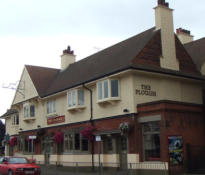
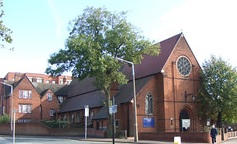
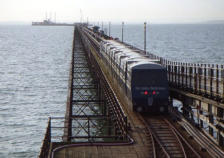
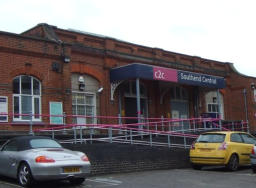

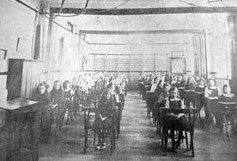
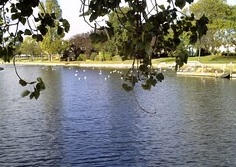
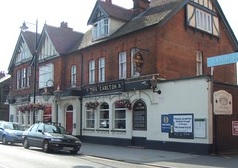
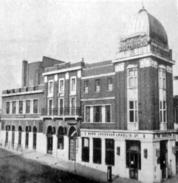
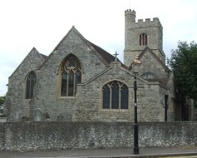
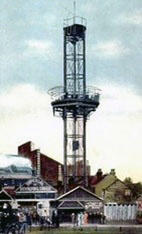
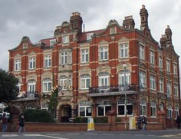
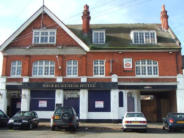
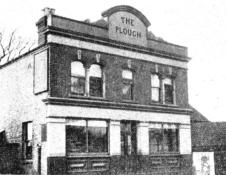
Original Plough c1897
Plough We Know Today
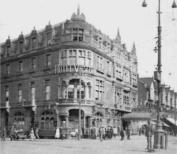
All Saints Church
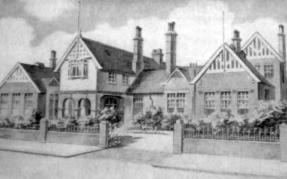
Victoria Hospital
Iron Pier
Southend Central Railway Station
Westcliff Hotel
Alexandra College
Southchurch Park
Carlton Pub
St Clement’s Church
Middleton Hotel
Warwick Tower
Hotel Victoria
Shoebury Hotel
Grand Hotel


Website Info:

Southend-on-Sea’s No 1 History Website! Documenting The Town & The Townspeople
Now Incorporating The Sea Of Change Website


SOUTHEND CITY
Chalkwell ▪ Eastwood ▪ Leigh-on-Sea ▪ Prittlewell ▪ Shoeburyness ▪ Southchurch ▪ Thorpe Bay ▪ Westcliff-on-Sea
































































